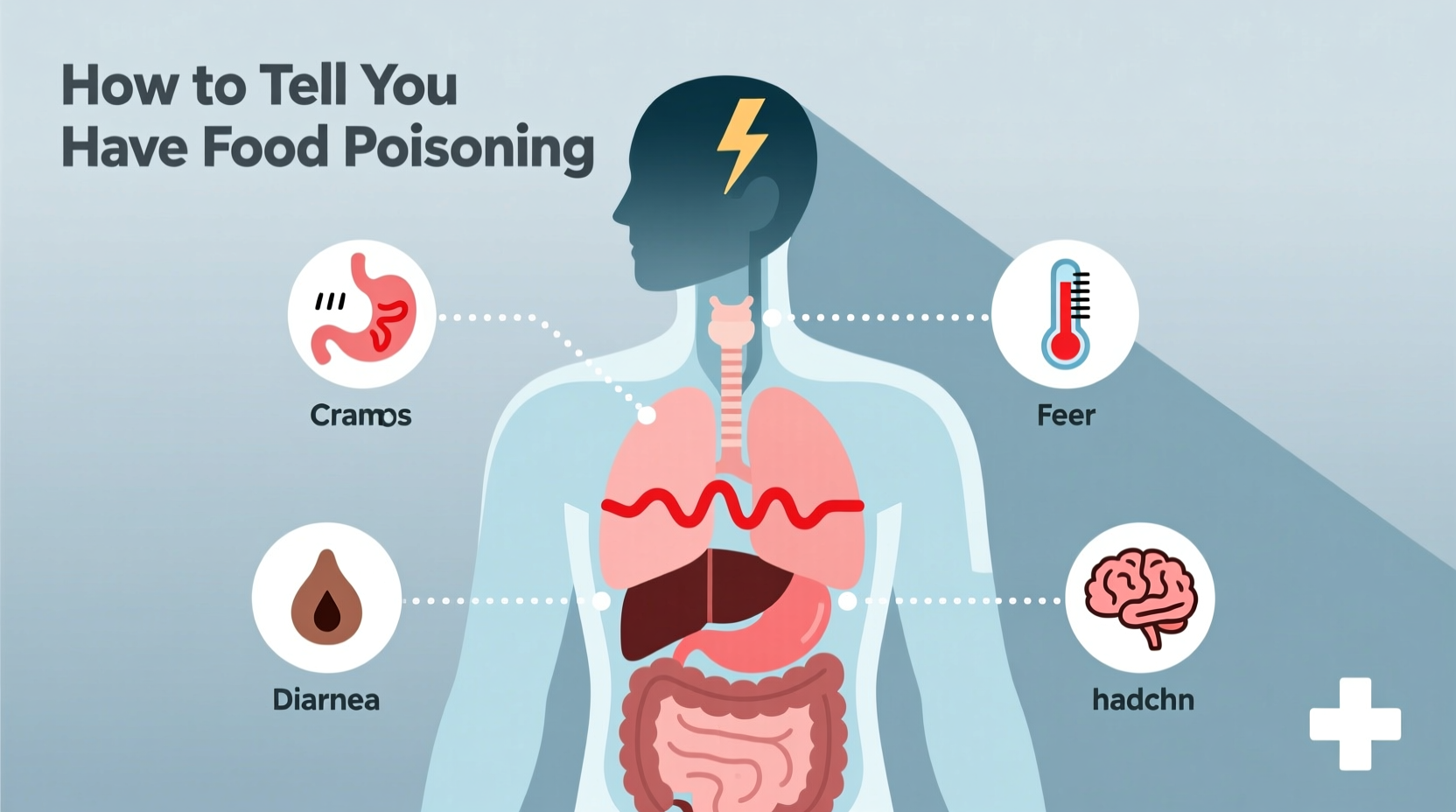Recognizing Food Poisoning: Your Step-by-Step Guide to Identifying Symptoms
When your stomach starts churning after a meal, knowing whether you're dealing with food poisoning or another illness can help you take appropriate action. Unlike viral gastroenteritis (stomach flu), food poisoning has distinct characteristics that appear shortly after consuming contaminated food.Immediate Symptom Recognition
If you've recently eaten and are experiencing multiple symptoms from this list within hours, food poisoning is likely:
- Sudden, forceful vomiting that comes on quickly
- Watery or bloody diarrhea beginning within hours
- Severe abdominal cramps and pain
- Nausea that doesn't subside
- Loss of appetite despite hunger
- Mild fever (usually below 101.5°F/38.6°C)
| Symptom | Food Poisoning | Stomach Flu |
|---|---|---|
| Onset time | 6-72 hours after eating | 1-3 days after exposure |
| Nausea/vomiting | Often sudden and severe | Gradual onset |
| Diarrhea | Watery, sometimes bloody | Watery, rarely bloody |
| Fever | Mild to moderate | More common and higher |
| Respiratory symptoms | Never present | Often present (cough, sore throat) |
Symptom Timeline: What to Expect Hour by Hour
Understanding the progression of symptoms helps confirm food poisoning:
- 0-6 hours: Rapid-onset symptoms typically indicate Staphylococcus aureus or Bacillus cereus poisoning (common in improperly stored meats, dairy, rice)
- 6-24 hours: Most common timeframe for Salmonella, E. coli, or Shigella (often from undercooked poultry, eggs, contaminated produce)
- 24-72 hours: Symptoms from Campylobacter (raw milk, undercooked poultry) or norovirus (though norovirus is technically viral gastroenteritis)
- 3-30 days: Longer incubation suggests Listeria (deli meats, soft cheeses) or parasites like Cyclospora

Key Differentiators from Stomach Flu
Many people confuse food poisoning with stomach flu, but these factors help distinguish them:
- Timing correlation: Food poisoning symptoms directly follow consumption of specific contaminated food
- Group occurrence: If others who ate the same food become ill simultaneously, it's likely food poisoning
- Absence of respiratory symptoms: Food poisoning never includes cough, sore throat, or runny nose
- Blood in stool: More common with bacterial food poisoning (especially E. coli) than viral gastroenteritis
When Food Poisoning Becomes Dangerous
While most cases resolve within 48 hours, certain symptoms require immediate medical attention according to CDC guidelines. Seek help if you experience:
- Diarrhea lasting more than 3 days
- Severe dehydration (dry mouth, dizziness, minimal urination)
- High fever above 102°F (38.9°C)
- Bloody stools or vomit
- Numbness, blurred vision, or muscle weakness
- Symptoms after eating high-risk foods like wild mushrooms or pufferfish
High-risk groups including infants, elderly adults, pregnant women, and immunocompromised individuals should contact healthcare providers sooner. The FDA Food Code emphasizes that vulnerable populations face significantly higher risks of complications from foodborne illnesses.
Action Plan: What to Do Right Now
If you suspect food poisoning, follow these evidence-based steps:
- Hydrate strategically: Sip small amounts of clear fluids (water, broth, oral rehydration solutions). Avoid sugary drinks and caffeine.
- Track symptoms: Note food consumed in the past 72 hours and symptom onset times - this helps medical professionals identify the cause.
- Rest: Your body needs energy to fight the infection.
- Don't stop diarrhea: Anti-diarrheal medications may prolong illness by preventing your body from eliminating toxins.
- Report suspected outbreaks: Contact your local health department if multiple people got sick from the same source.
Preventing Future Episodes
According to WHO food safety standards, following these practices reduces your risk:
- Cook meats to proper internal temperatures (use a food thermometer)
- Refrigerate leftovers within 2 hours (1 hour if above 90°F/32°C)
- Wash hands thoroughly before handling food
- Separate raw meats from ready-to-eat foods
- Wash fruits and vegetables under running water
When to Consult a Medical Professional
While most food poisoning cases resolve without treatment, certain situations warrant medical evaluation:
- Symptoms persisting beyond 48 hours
- Inability to keep fluids down for 12+ hours
- Signs of severe dehydration (sunken eyes, rapid heartbeat, confusion)
- Underlying health conditions like diabetes or kidney disease
- Pregnancy (certain foodborne illnesses pose risks to fetal development)
Healthcare providers can perform tests to identify specific pathogens and determine if antibiotics or other treatments are necessary. The CDC reports that proper medical intervention reduces complication risks by up to 70% for severe cases.











 浙公网安备
33010002000092号
浙公网安备
33010002000092号 浙B2-20120091-4
浙B2-20120091-4